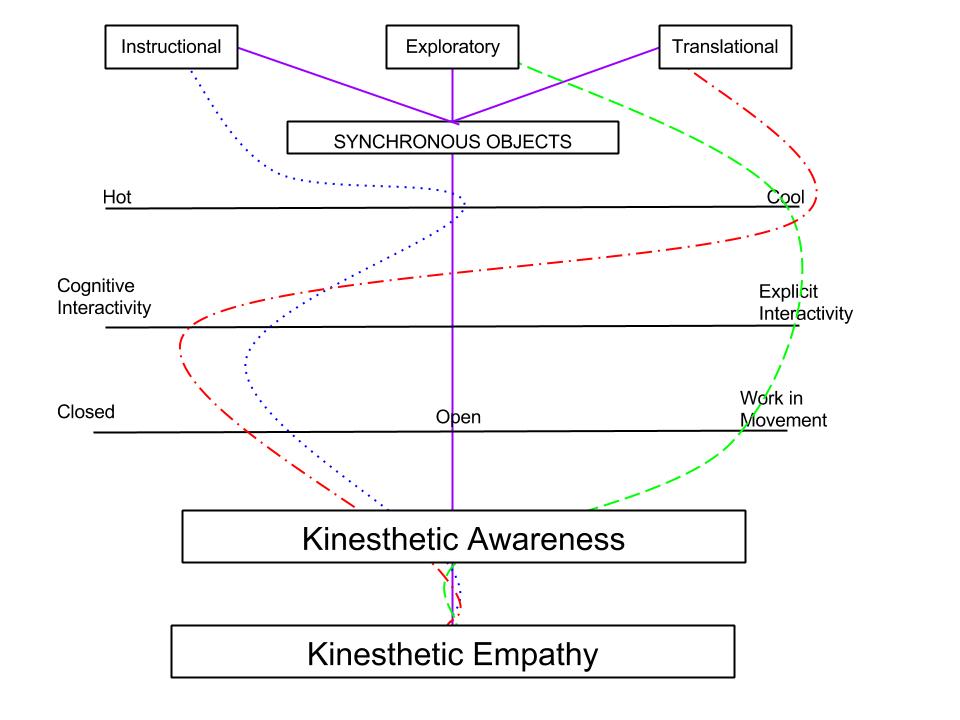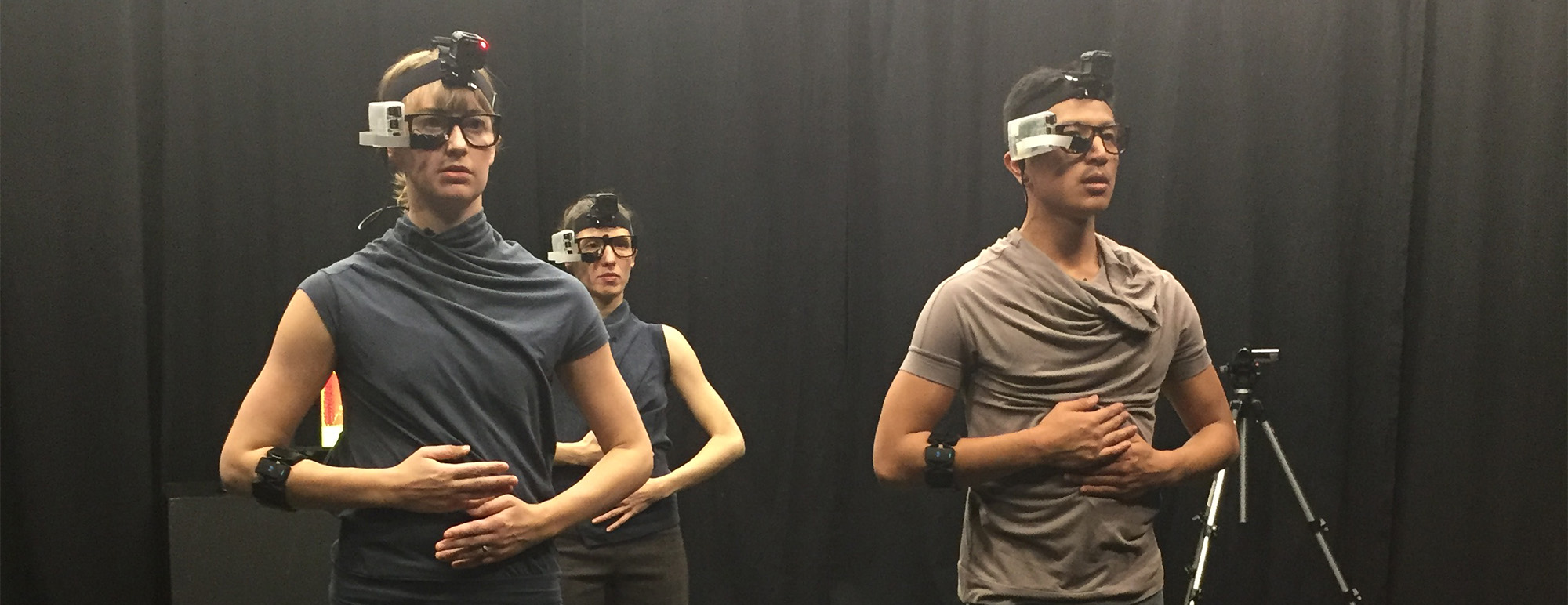a performer's perspective.
We explore ways to transmit a dance performer’s point of view through the creation of an interactive documentary. Using qualitative and quantitative research methods, we gathered a broad spectrum of data to understand the kinesthetic experience of dancers in Judith Garay’s work, the fine line ~ twisted angels. The dancers’ data is presented through various forms and modes of interaction, providing audiences the opportunity to reflect, empathize and understand the choreography through multiple lenses.
why.
The idea for transmitting a performer’s perspective through an interactive website is inspired by digital dance scores developed by The Forsythe company, including Synchronous Objects and Motion Bank. Similarly, we explore how digital technology can extend perceptions of the physical body and translate dance movement into new forms that transcend language.
This interactive documentary is unique in that our primary focus is the performer’s perspective, a viewpoint that is rarely archived in dance choreography. This website enables the performers’ experiences to live on along with the choreography while also providing multiple avenues for viewers to respond and engage with the dance choreography. Our overarching goal is not only to translate and extend one’s perceptions of dance movement, but to explore how interaction and digital technology can be utilized to better communicate bodily knowledge to a broad audience.


instructional. exploratory. translational.
The dancers’ data is organized into three categories of interaction within the website:
Instructional Interaction increases the viewers’ familiarity with a movement by focusing attention to specific features or moments of interest.
Exploratory Interaction allows viewers to explore specific features of movement in new contexts and invites more opportunities for explicit interaction.
Translational Interaction gives new meaning to specific movement features through transformation and provides the viewer with an opportunity to reflect on the relationship between movement, meaning, and experience.
This interactive documentary incorporates Instructional, Exploratory and Translational interactions as a way to increase kinesthetic awareness and transmit the kinesthetic experience of each performer. Each category of interaction incorporates varying levels of viewer engagement to increase kinesthetic awareness. These categories of interaction are based on ideas put forth by media theorists Marshall McLuhan, Eric Zimmerman, and Umberto Eco (See figure 1).
Hot/Cool (Marshall McLuhan): A hot medium is high resolution and a cool medium is low resolution. In hot mediums little is left to the viewer’s imagination; while in cool mediums the viewer must fill in the missing details. 1
Cognitive/Explicit Interactivity (Eric Zimmerman): In cognitive interactivity a viewer has little agency in directing the outcome of the work, but is interactive in the sense that one’s interpretation of the work changes depending on the context in which one is viewing the work. In explicit interactivity the viewer is given choices to direct the work’s completion. 2
Closed/Open/Work in Movement (Umberto Eco): Open works offer viewers multiple avenues or ways in which to interpret a work; while closed works are more limited in how they can be interpreted. A work in movement is similar to explicit interactivity in that it provides the viewer with a more active involvement in the completion of the work. 3
These categories of interaction were first coined by Cuykendall et. al. 2014. 4
data.
We collected several types of qualitative and quantitative data to understand the performers’ kinesthetic experiences in the fine line ~ twisted angels
Field notes: Shannon Cuykendall observed and took field notes during multiple studio rehearsals. Her observations informed topics discussed in the interviews.
Interviews: Interviews were conducted by Shannon Cuykendall immediately following rehearsals. The performers described their kinesthetic sensations, imagery, and reflected on their interpretations of the choreography.
During a full day recording session, we captured sections of the choreography with various sensors and recording devices.
Kinect: We recorded sections of the choreography with the Microsoft Kinect Camera V.2. We placed two Kinect cameras 180 degrees from one another in order to create a 3D model of the choreography.
Myo: Using a Myo armband, we recorded the dancers’ acceleration, electromyography (EMG), and angular velocity. Jules Françoise, a post doc of movingstories, developed a new external for Cycling’74 Max to connect with the Myo and can be downloaded here.
Eye Tracking: Graduate student Ethan Soutar- Rau developed mobile, untethered eye tracking glasses to capture the dancers’ eye movements while performing the choreography. The glasses were created using a raspberry pi computer and small infrared camera.
GoPro: Each dancer wore a GoPro Hero Session 4 head-mounted camera while performing the choreography to capture a first-person perspective.
Audio: In addition to collecting post-hoc accounts of the performers’ experiences in the interviews, we also recorded their sonifications and real-time reflections of their experiences as they performed the choreography.
Video: We recorded video of studio rehearsals, the recording session, and interviews for analysis and reference. Graduate student Rachel Ward captured video specifically for the documentaries featured throughout the website.
Photography:Graduate Student Reese Muntean took photos during a studio performance and undergraduate student Marina Khvan, took photos during the recording session.